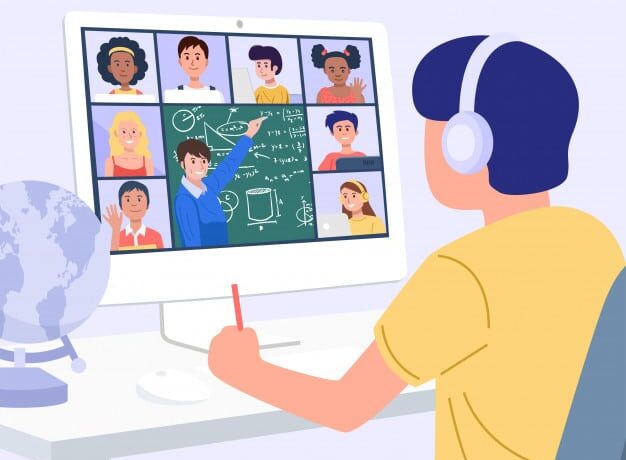Screen time is the time spent watching a screen for leisure or work. With the advent of online learning and hybrid learning, screen time has become unavoidable for children. They often spend several hours in a day glued to the screens of their tablet, laptops, or phone. As a result, they suffer from health problems related to excessive screen time.
Health Problems Caused by Too Much Screen Time
Obesity
Too much screen time means too little exercise. Minimum or no exercise in children often leads to obesity which then causes other health problems.
Sleep Problems
The light coming from the screens is bad for the sleep cycle. Children who have too much screen time or who have screen time before bed may have trouble falling asleep or may experience other sleep-related issues.
Behavior Issues
Younger kids who watch more than 2 hours of the screen in a day often exhibit behavioral issues. They may also experience problems with their cognitive abilities.
Posture Issues
Kids watch their phones, or laptops in weird positions. Sitting in bad postures for long durations can cause posture issues like pain in the neck, lower back, etc.
Ideal Screen Time Numbers for Children
According to the American Academy of Pediatrics, the acceptable screen times for children are:
- One hour per day for children between the age of 2-12.
- Two hours per day for teens and adults.
- No screen time for children under the age of 2.
It’s almost impossible to follow these numbers. 1-2 hours of screen time is too less if you look at the amount of work we do with our screens. You can still somehow manage to restrict younger kids to 1-2 hours of screen time but it’s not possible with older kids who both learn and socialize online. Restricting screen time with such kids might result in the loss of lessons. So, all you can do is follow some good practices of screen use.
1) Restrict Screen Usage to Study
One way of reducing screen time is to restrict screen time to study only. Parents should encourage children to socialize with friends face to face and to find different methods for entertainment other than the screen. This will reduce the screen time by several hours which will, in turn, reduce its effect on the mind and body.
2) Plan Breaks Between the Sessions
According to medical experts, breaks between the sessions can help in mitigating the harmful effects of screen time. If your child is taking online classes or if the schools are online at the moment, plan breaks between the sessions. A 15-30 min break after every one hour can work wonders. Most schools are trying to follow this pattern, so you do not have to worry about breaks with school sessions and for others, you can ensure that your child is taking breaks after the continuous sitting of 45 minutes or one hour.
3) Create an Exercise Routine
Too much sitting is bad for posture and can also lead to obesity. This is why it is important to create an exercise routine for children of all age groups. Encourage your children to exercise at least once a day and guide them about some quick exercise routines that can be performed in their session breaks. Consider neck exercises, back exercises, and wrist exercises.
4) Plan Activities like Phone Free Weekends
Plan some activities related to phone usage. Make weekends phone-free. Announce a fine for phone usage after a certain time in the day or restrict phone usage a few hours before bedtime. Get creative with your restrictions so that everyone can plan their activities according to the restrictions and nobody gets upset either.
Tweak the Screen – Change the Settings
You can also make some changes to the devices to reduce the bad effects of screen time.
- Reduce the Glare
The glare coming from the screen is bad for the eyes. You can reduce it with the help of anti-glare screen covers. You can also get anti-glare glasses made for your kid. These are 0 power glasses that protect the eyes if they are diligently worn during screen time.
- Change the Brightness
Screen brightness puts a lot of stress on eye muscles. You must adjust the brightness according to the room you are sitting in and keep it minimal. Set the screen brightness so that the content of the screen is visible comfortably. If you are sitting in a bright room, reduce the brightness by turning off a few lights or closing the curtains. To improve visibility, change the contrast of the screen rather than the brightness.
- Keep a Distance
Sitting too close to the screen can harm the eyes. Our eyes have to work hard to focus on things that are kept very close. For best results, the screen should be kept at least 25 inches away from the eyes. Let your children know about this rule so that they can follow it with every device.
Conclusion
Screens have become an important part of our children’s life by entering the education space. The only way we can restrict screen time now is by limiting its usage in other aspects. Go old school with your children. Ask them to play outdoors with their friends, encourage them to pursue hobbies such as music and art, and most importantly, talk to them about the negative impact of screen time and help them understand the best practices.



